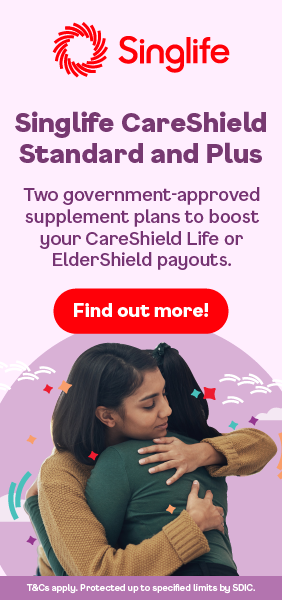Insurance? Oh, I used to think it was for people who owned houses or had kids. Me? I was more concerned about what to order for dinner. But then reality came knocking, and so did the need for a plan. A few wake-up calls – like rising costs, a pre-existing condition and my family’s health history – made me realise that insurance isn’t something you should procrastinate. If you’re wondering if you really need insurance in your 20s, let me share what finally made me take it seriously.
Lock in lower premiums early
In my late teens and early 20s, I’d always thought insurance was just for parents or retirees – for covering hospital visits or deaths. It felt like something I wouldn’t need for a long time.
While I did buy a medical insurance plan when I was 25 years old (read about my motivations for this further down in this article), I procrastinated on getting other types of coverage. There was no urgency – until I stepped into the world of insurance and realised that the longer I waited, the more expensive premiums would get. I quickly learned that premiums for certain insurance plans I might need one fine day (i.e., term life insurance, critical illness insurance) would increase on my 29th birthday, as I'd be charged an as individual who’d be 30 years old by my Age Next Birthday.
I even joked with my Financial Adviser Representative about whether the industry followed the Korean or Chinese calendars as I rushed to buy some plans. Why are premiums cheaper when we buy at a younger age? I’d guess that it’s because the chances of developing health issues increase as we grow older, and this is priced into our insurance premiums. Nevertheless, I’m glad I made the decision to lock in my insurance premiums sooner rather than later.
One thing I learned? Getting insurance while I’m younger and healthier means I’m covered even when the risk of health issues surfacing increases later in life. For example, plans like Singlife Shield Starter offer automatic renewal, and they even guarantee to upgrade you to a more comprehensive Shield plan at age 40. By then, when the risk of chronic conditions or health issues is likely to be higher, you can rest assured that your coverage is locked in with zero hassle.
A lower fixed premium also means less financial strain later on – especially as I start taking on bigger responsibilities, like buying a home, getting married, or even starting a family, in my 30s. Why pay more for the same thing later?
Secure full coverage before it’s too late
My wake-up call came at the age of 26, two years after entering the workforce – a period marked by long working hours and social drinking. Was it fun? Yes. Was this lifestyle healthy? Not exactly. I began experiencing recurring tummy aches, acid reflux and other digestive issues.
After seeing a specialist and undergoing an endoscopy, I was diagnosed with duodenitis – inflammation of the small intestine. I was put on Omeprazole, antacids, and had to make some lifestyle adjustments or risk developing ulcers in my GI (gastrointestinal) tract, or worse, cancer.
This ordeal eventually made me buy a hospitalisation plan, but because of my earlier condition, it came with an exclusion: no coverage for anything related to my gastrointestinal tract. This meant that if I developed ulcers or other complications, the costs would be on me. Imagine having an exclusion on an entire biological system because of one health incident — how’s that for a wake-up call?
On the bright side, I still consider myself lucky. My condition is manageable and can be kept under control with regular exercise, less caffeine and alcohol intake, and better stress management. Plus, I now have a better understanding of how our health today directly impacts the kind of coverage we can get tomorrow. If you're currently healthy with no medical conditions, now's the best time to lock in comprehensive coverage without exclusions.
Chronic conditions like diabetes, high cholesterol and hypertension are now more common among people in their 30s. These conditions require prolonged medical care, and if you wait too long, getting insured can become way more complex — or even impossible.
Securing my hospitalisation plan was a step in the right direction, but that was the only coverage I had until I turned 28. Getting fully covered was expensive, and I didn’t want to sink a few thousand dollars on insurance products I wasn’t sure I needed.
Minimise the potential financial strain of health risks that run in the family
My family is in relatively good health. We’re petite, lean, and try to exercise when we can. Even so, we’re not immune to health risks – high blood pressure and cholesterol run in the family, and there are the odd cases of diabetes and cancer in previous generations.
In my younger days, I brushed off health concerns with the typical “won’t happen one” mindset. I'd always thought of my family and relatives as immortal heroes who’d be there my entire life. But with age, I’ve come to realise that illnesses aren’t always quick or painless. They can strike anytime and sometimes, seemingly without warning. Living with a condition can be expensive, and I wouldn’t want to be a burden on my loved ones because of it.
The insurance plans I got before turning 30
For the three reasons above, I sought out comprehensive coverage before turning 30. I now pay about S$300 per month for these plans I deem essential:
- Term life insurance
- Critical illness insurance (men and general)
- Early critical illness insurance
- Medical/hospitalisation insurance
These policies give me peace of mind knowing that should “what ifs” happen, I have a financial safety net to cover treatments and loss of income, or even support my family.
Final thoughts
Let’s be real – insurance isn’t the sexiest purchase out there. It’s not like buying a sleek new gadget or splurging on a luxurious holiday. But it’s also one of the most practical purchases you’ll make in life. A big part of my adulting process came with accepting that someday, I’d need it (and probably use it).
Insurance is not just for older folks. In fact, getting covered from a young age makes it more affordable and the application process will be less complicated. In my opinion, beginner plans like Singlife Shield Starter and Singlife Simple Term are great for those in their 20s – easy to understand, affordable, and perfect for building your first layer of protection. This is especially true if you're a proponent of "Buy Term, Invest the Rest" and want to manage your own investment decisions. However, if having more comprehensive coverage gives you more peace of mind, Singlife Elite Term II and Singlife Shield might be more up your alley. Everyone has their own needs and budget, and it’s important to do your own research and find something that suits your current life stage.
If you’re still on the fence, take it from me: it’s better to start now than to wish you had later. I’m still three years away from being able to appeal the GI tract exclusion on my hospitalisation plan, but at least I know I’m covered for everything else in the meantime. If you’re not sure where to start, the Singlife Starter Pack shows you how you can get the essentials covered affordably.
These policies are underwritten by Singapore Life Ltd. This is published for general information only and does not have regard to the specific investment objectives, financial situation and particular needs of any specific person. Any views, thoughts, and opinions expressed by the individual(s) are solely that of such individual(s) and do not reflect the views, opinions, policies, or position of Singapore Life Ltd or its related corporation (where applicable) (collectively, the "Singlife Group"). You may get a copy of the Product Summary from Singapore Life Ltd. and the participating distributors’ offices. You should read the Product Summary before deciding whether to purchase the product. You may wish to seek advice from a financial adviser representative before making a commitment to purchase the product. If you choose not to seek advice from a financial adviser representative, you should consider whether the product in question is suitable for you.
Notes:
Simple Term Plan
As this product has no savings or investment feature, there is no cash value if the policy ends or if the policy is terminated prematurely. Buying a health insurance policy that is not suitable for you may impact your ability to finance your future healthcare needs.
Singlife Elite Term II
As buying a life insurance policy is a long-term commitment, an early termination of the policy usually involves high costs and the surrender value, if any, that is payable to you may be zero or less than the total premiums paid. Buying a health insurance policy that is not suitable for you may impact your ability to finance your future healthcare needs.
Singlife Shield / Singlife Shield Starter
As this product has no savings or investment feature, there is no cash value if the policy ends or if the policy is terminated prematurely. Buying health insurance products that are not suitable for you may impact your ability to finance your future healthcare needs.
This is not a contract of insurance. Full details of the standard terms and conditions of these policies can be found in the relevant policy contracts. This advertisement has not been reviewed by the Monetary Authority of Singapore. Protected up to specified limits by SDIC.





